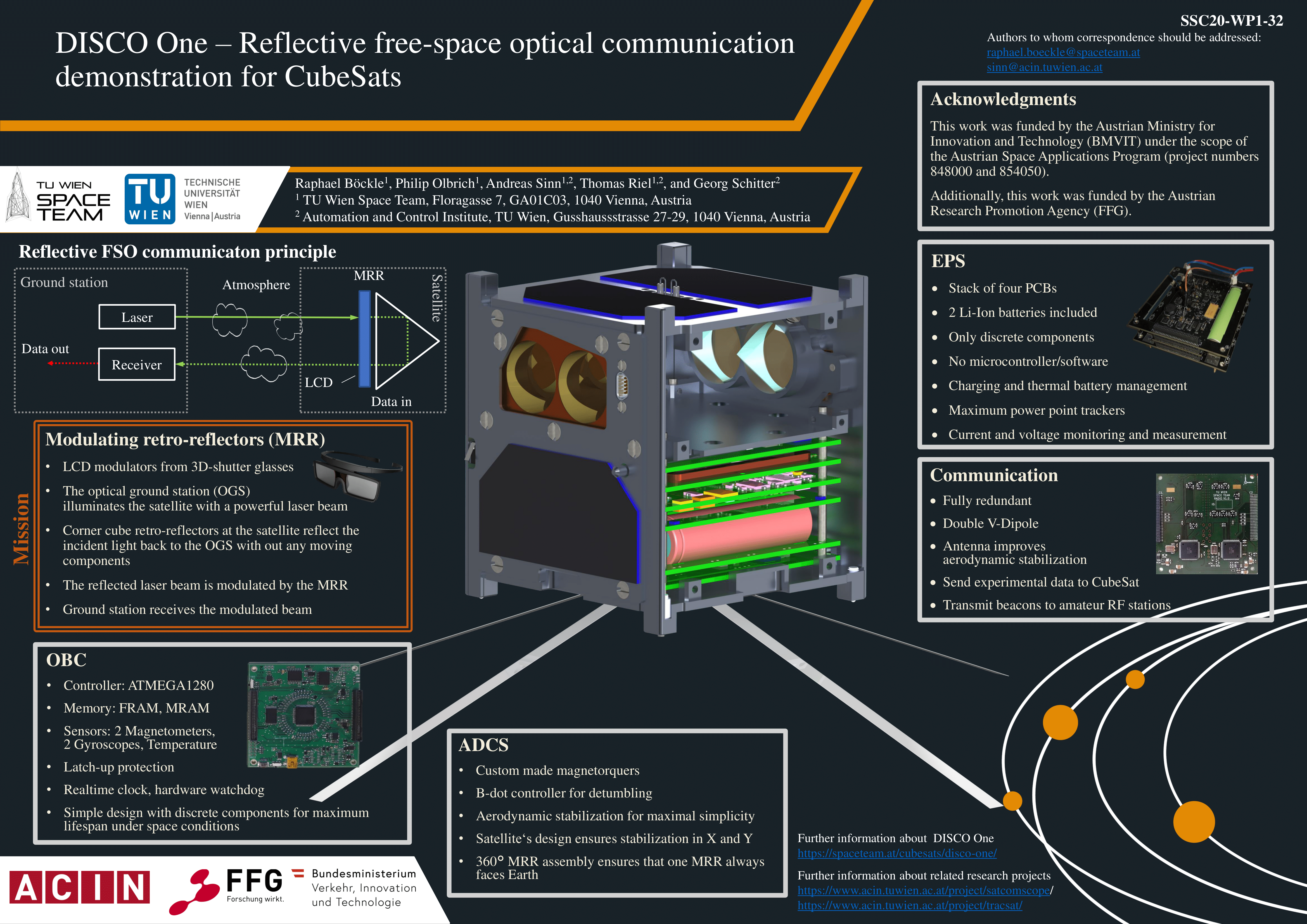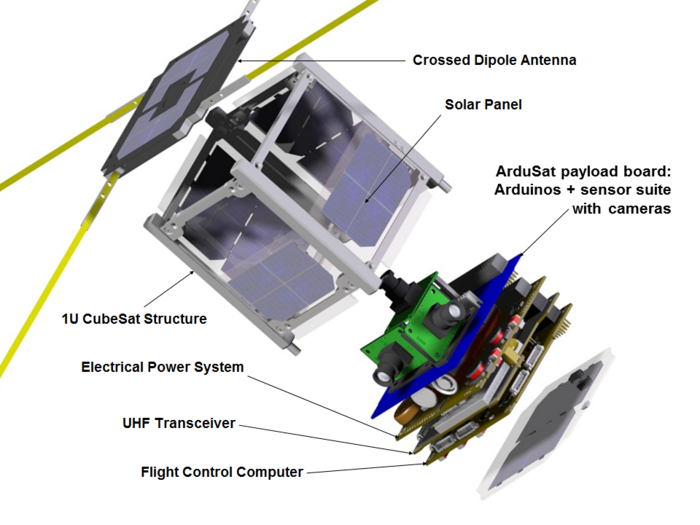In 2018 the idea for DISCO One came up. The goal of DISCO One was the demonstration of reflective free-space optical communication for CubeSats. The science topic was introduced and evaluated by the Automation & Control Institute (ACIN) of TU Wien. The project DISCO One started with the design of prototypes of each subsystem – namely ADCS (attitude determination and control system), COM (communication module), EPS (electrical power system), MRR (modulated retro-reflector) and the OBC (on-board computer). Another important aspect was that learnings and insights which were gained throughout the development of Pegasus were implemented. During the last two years substantial progress on the subsystems was made, but unfortunately, in Spring 2020 the TU Wien Space Team decided that the realization and implementation of the science module (MRR) is not possible with the currently available infrastructure and resources.
As a highlight of the DISCO One project the presentation of a concept poster at the 34th Small Satellite Conference can be stated. Figure 1 shows the poster which was presented at the conference.

Figure 1: DISCO One poster contribution at the 34th small satellite conference in August 2020 (https://smallsat.org).
As stated in the introduction the CubeSat team made progress on DISCO One and the basic subsystems are on the right track and can be used for further development. Therefore we decided to come up with a new CubeSat project, which contributes directly to the goals of the TU Wien Space Team. By starting with a technical and scientificaly feasible project we can further gain learnings and therefore can establish more complex CubeSat programs in future. As a starting point of the evaluation of the new project the following points were an important start for the new CubeSat mission:
Space education:
The TU Wien Space Team shall promote educational contributions for its members and the public in the field of Space.
Approved education program:
The TU Wien Space Team shall establish an approved education program for the interested community.
Space Awareness:
The TU Wien Space Team shall increase Space awareness for civil applications.
Self-developed CubeSat in Space:
The TU Wien Space Team shall develop and operate its own CubeSat and shall therefore conserve its know-how internally.
Picture from Space:
The TU Wien Space Team shall take a picture of the Earth originated from Space and send it back to Earth.
As stated above the education aspect is one of the major goals of the TU Wien Space Team. Therefore, it was decided to develop a CubeSat with a major focus on the education of students. The basic concept of the new CubeSat project is related to the idea of ArduSat by NanoSatisfi LLC. Figure 2 shows an exploded view of ArduSat.

Figure 2: Exploded view of ArduSat, NanoSatisfi LLC; with its major components.
Basically, a sensor board with various sensors and cameras is used as the science/education payload of the CubeSat.
In our approach students from “Oberstufe” AHS and HTL can participate in an educational program, in which their self-developed software is transmitted and executed to respectively by the CubeSat. The measurement results are then transmitted back to a ground station and forwarded to the student teams for further processing. For a more detailed insight on the CubeSat idea and its progress a new static page in the CubeSat section was created. As the project is in its first steps the decision for the name was not made yet. However, the decision process already started and the new name of the CubeSat will be announced soon. The new content can be found here.
Right now the CubeSat team is busy working on the first milestone: The Preliminary Design Review (PDR), which will take place in the beginning of October 2020. In the PDR the main concept will be investigated and reviewed. The most important point in the PDR is the definition of the system requirements of the CubeSat mission – on a functional and physical level. Other important aspects are the mission analysis, the high-level definition of the subsystems and in our case the whole school infrastructure, which is an important and huge aspect in this mission. The CubeSat team is highly motivated and is looking forward to present some more information regarding our new CubeSat project in the upcoming weeks and months.